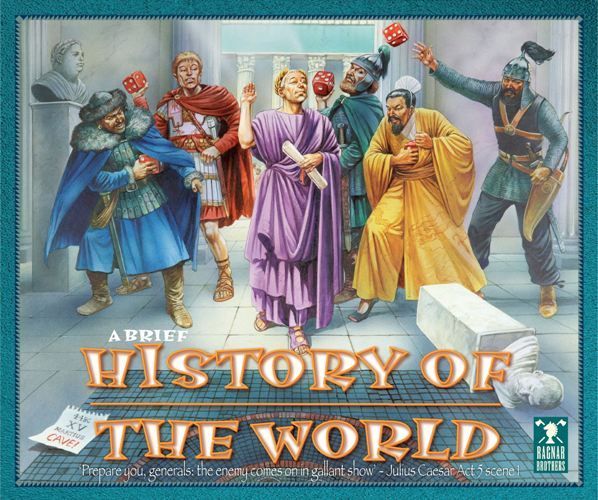A Brief History of the World (2009) Board Game
A Brief History of the World is a board game designed by Peter Dennis and published in in 2009. It is a strategic game that takes players through different eras of history, from the age of ancient civilizations to the Napoleonic era. Players must compete to build the most successful civilization and conquer territories to earn victory points.
Game Components of A Brief History of the World
How To Setup A Brief History of the World
To set up the game, players start by selecting their colors and taking the corresponding score markers and armies. Each player chooses an empire card and an event card at the beginning of each epoch. The game board is updated with region tokens that reflect the point values for the current epoch. Players then prepare for their turns by understanding the advantages and disadvantages of their chosen empires and the effects of their event cards.
Gameplay Mechanics and Game Objective
Player Experience
Playing **A Brief History of the World** is an immersive experience that takes players through various epochs of human history. Each round offers a new challenge as players assume different empires, each with its unique strengths and weaknesses. The game requires strategic thinking, as players must balance expansion with defense and utilize event cards effectively. The dynamic nature of the game, with its changing empires and events, keeps players engaged and eager to adapt their strategies.
Pros
Cons
Personal Thoughts on A Brief History of the World
**A Brief History of the World** is ideal for players who enjoy complex strategy, historical themes, and a high level of replayability. It is best suited for experienced board game enthusiasts who can appreciate the depth and complexity of the game mechanics. However, new players may find the rules and setup somewhat daunting. Overall, it is a game that rewards strategic thinking and offers a unique and engaging experience for those who enjoy epic, historically-themed board games.
We are supported by our audience. When you purchase through links on our site, we may earn an affiliate commission, at no extra cost for you. Learn more.

